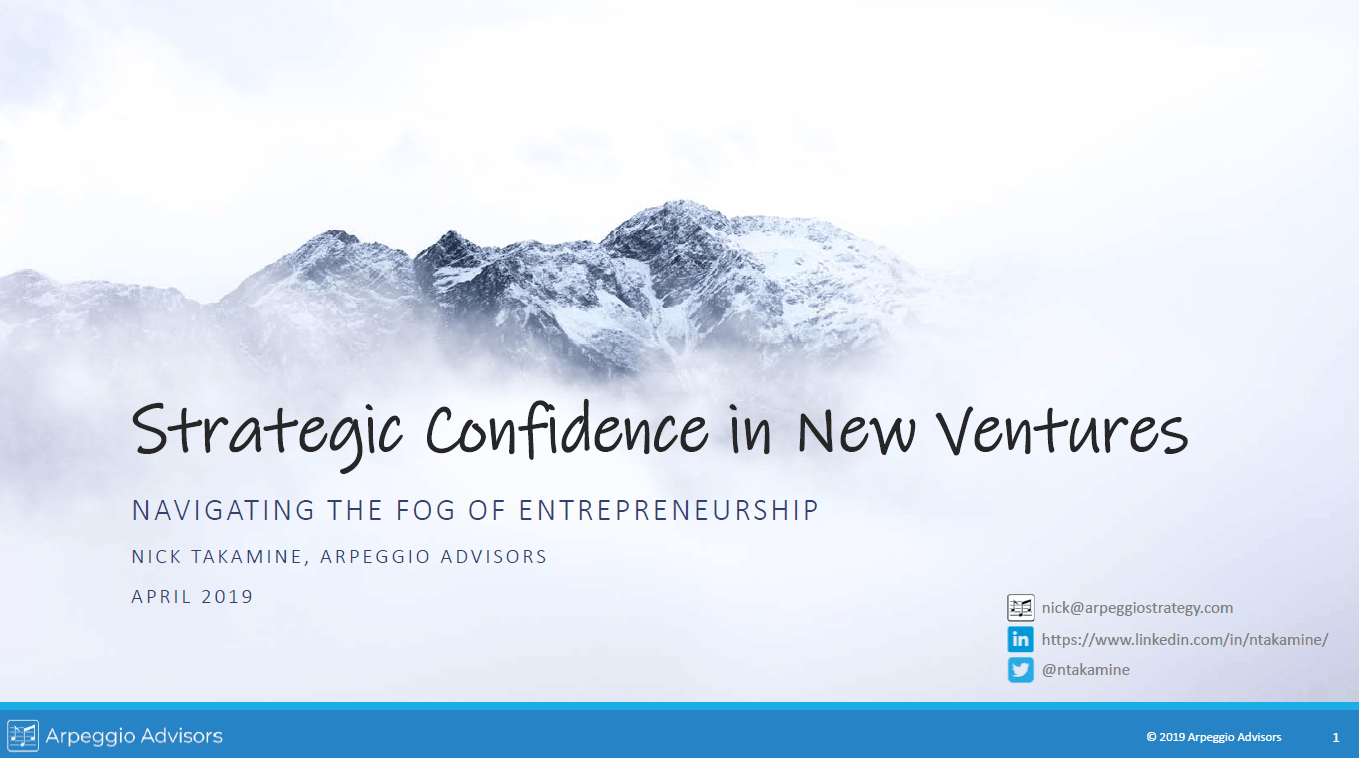
Blog Layout
Nonprofit Leaders are Strategists, Too
Nicolas Takamine
Nonprofit leaders are hungry to upgrade their strategy toolkit but remain an underserved population when it comes to strategy resources and support.

The notions of “charitable activity” and “giving back” fail to do justice to the work of nonprofit leaders today. These ideas paint the familiar picture of nonprofit work as a selfless act, in which effort itself deserves society’s gratitude. In this view, the nonprofit leader’s job is relatively elementary — more like the discretionary pursuit of a passion project than the advanced, demanding job of leadership in the private sector.
Any nonprofit leader knows this to be an outdated view. They know success has little to do with how deserving their mission is or how much they care. Through today’s lens, the $1.7 trillion nonprofit landscape is viewed as a market, with nonprofit entities competing for the right to expand their work. Both boards of directors and funders view nonprofits as mission-driven enterprises and the expectations of nonprofit leadership have evolved accordingly.
In this market-based worldview, nonprofit leaders are called upon not only to execute — to operate efficiently and to prove their organization’s outcomes — but also to craft and lead strategic change in a perpetual quest for greater impact.
On a daily basis, nonprofit leaders grapple with the same critical questions that vex the c-suite of Fortune 500 corporations: What are our growth opportunities? How should we allocate our resources? How can we differentiate our organization from others? Would merging with another organization
increase our impact?
These are questions from the domain of strategy, not charity.
Like their counterparts in the private sector, nonprofit leaders are strategists.
But that doesn’t mean they’re set up for success.
Where are the strategy resources for nonprofit leaders?
In 2009, I left my job in investment banking to join FHI 360, an international development nonprofit whose leadership was seeking to mature the organization’s practice of strategy. I was charged with bringing the business perspective to that journey.
I knew there was much to learn about strategy
from the private sector but that a simple “copy-paste” wouldn’t work — some translation for the social sector context would be needed. I set out to find resources that spoke to the nonprofit context but found astonishingly little in the way of high-quality literature and few practical tools. Out of necessity, I learned via many months of bedtime reading and on-the-job problem solving to parse the private sector body of knowledge and translate it for our purposes.
For me, it was an energizing challenge. Yet it was disappointing to know that social sector leaders who lacked the time to invest in a similar self-study endeavor had few quality resources available to help them upgrade their strategy toolkit.
That was nearly a decade ago. While there has been some progress, today’s strategy resources for nonprofit leaders remain woefully inadequate.
I recently Googled the search term “strategy for nonprofits.” Shockingly, eight of the first ten search results were listicles, the easy-to-consume but limited-in-managerial-value article format that promises advice like “5 Keys to Successful Nonprofit Strategy.”
Strategy is a discipline—its practitioners need more than listicles. They need a robust body of knowledge providing tools and methodologies to explain what they should do to reach their goals, how to prioritize and make tough decisions, and why they should be confident in their strategic direction.
Unfortunately, the standard strategy literature generally does a poor job of speaking to the social sector context. While it’s true that recent publications often contain a chapter or paragraph discussing how the concepts apply in the social sector, they seem to be afterthoughts that lack the depth and richness needed to help practitioners internalize the concepts and put them to use.
The attempts of nonprofit industry associations to translate the literature for their members also fall short. For instance, their resources explain what a strategic planning process entails, including that it should involve the discerning allocation of resources. Yet they stop short of providing the tools to help a leader decide how
to allocate resources strategically.
Almost ten years after I first searched for nonprofit strategy resources, social sector leaders seeking to build their strategy muscle must still navigate the private sector literature largely on their own.
The unfortunate truth is that, when it comes to resources and support for strategy, social sector leaders remain an “underserved population.”
Support for the nonprofit strategist
Ever since my days at FHI 360, I have been on an expedition to translate strategy concepts for use in a social sector context. Now, after independent research, an MBA, and a career spanning investment banking, nonprofit strategy, and both pro bono and traditional strategy consulting, I’m embarking on a journey to help nonprofit leaders put strategy to work.
In January 2018, I launched Arpeggio Advisors to help leaders of nonprofits define their strategy and transform their organizations
to achieve it. In partnership with the clients I serve, I’m applying key strategic concepts in the social sector and in doing so am helping to map out the nonprofit leader’s guide to the strategy literature.
In the short few months of this journey so far, my clients and I have leveraged powerful concepts from the capabilities-driven strategy
perspective, the jobs-to-be-done theory of innovation, and the customer development startup framework
to bring new insight to their strategic thinking.
Subscribe for more on nonprofit strategy
In addition to my consulting, I plan to share my perspectives via this blog series
in hopes of helping an even wider audience navigate the strategy literature.
If you’re a nonprofit leader seeking to better understand what we know about strategy from the private sector, my hope is to help you internalize those strategy concepts and to build your intuition for how they apply in a mission-driven context.
I plan to address a variety of strategy topics specifically with a social sector audience in mind. I’m currently planning for initial topics to include the following:
- What is strategy, anyway? If you’re a nonprofit leader, you’re no stranger to the term “strategy.” But do you understand what it really means and what makes it such a powerful concept?
- Strategy thought provokers. A collection of links to eye-opening reads that will make you question whether your strategy is up to snuff.
- Anatomy of a value proposition. A clear value proposition is at the heart of every sound strategy. Can you articulate yours in a way that guides practical action?
- I’m a nonprofit professional. Should I get an MBA? An MBA is one way that many nonprofit professionals choose to learn about strategy (and so much more). My thoughts on the value of an MBA for the nonprofit strategist.
Interested to read more about these topics? Sign up below for email notifications when I add a new post. I would also love your suggestions for additional topics to tackle. What nonprofit strategy questions have been on your mind?
Learning about and engaging with others on social sector strategy is a passion of mine, so I’m looking forward to sharing my thoughts. Please join me on this journey!

By Nicolas Takamine
•
15 Apr, 2019
When you start something new—whether it be a nonprofit, a social venture, an initiative or a business—you face very few knowns and a sea of unknowns. Three concepts from the strategy literature that can help leaders of new ventures be intentional about the steps they take when so much about the immediate future is unknown.

